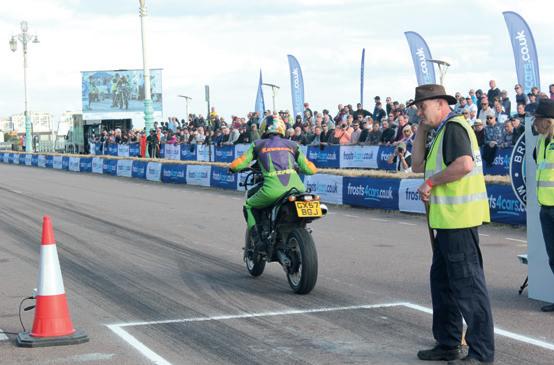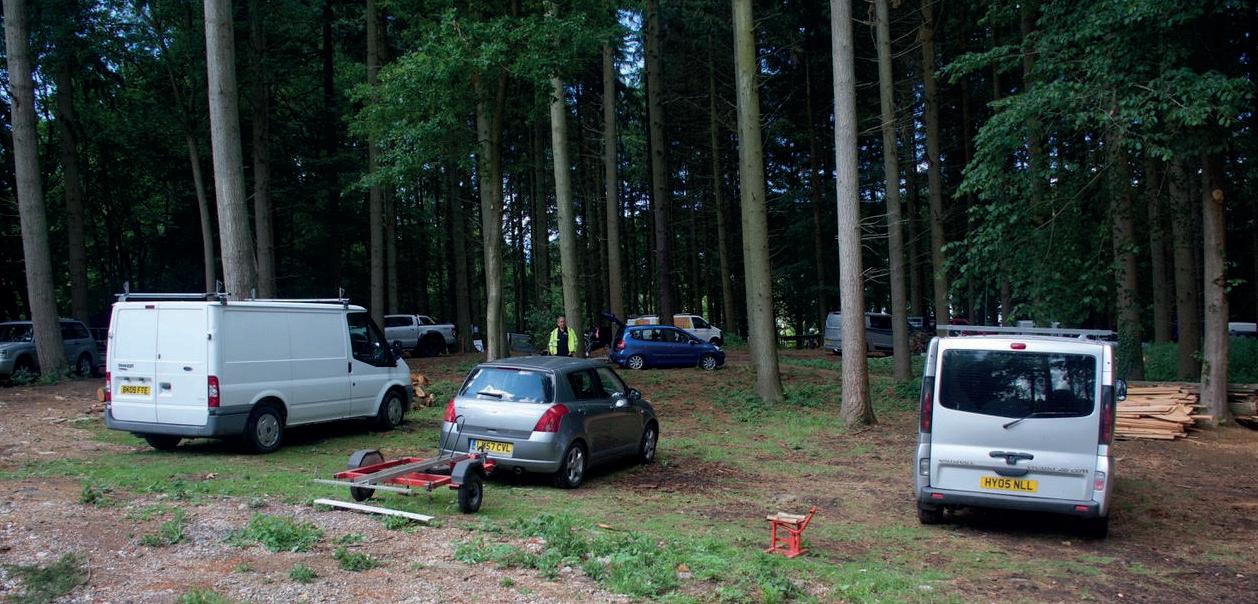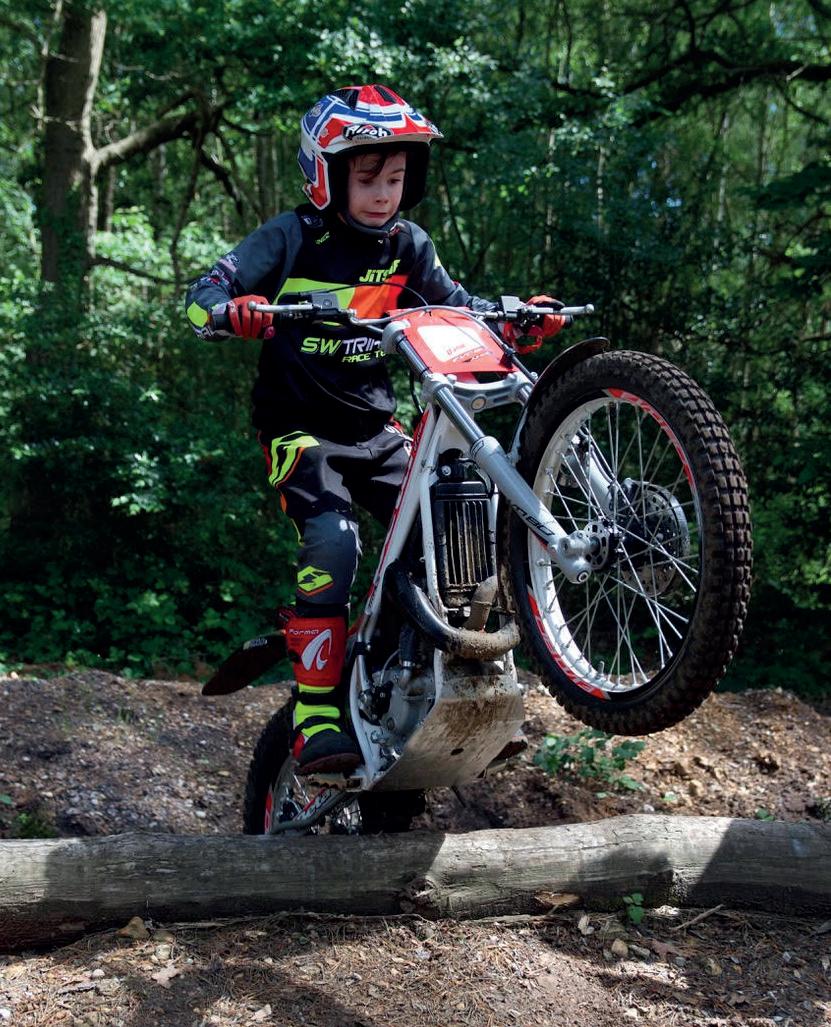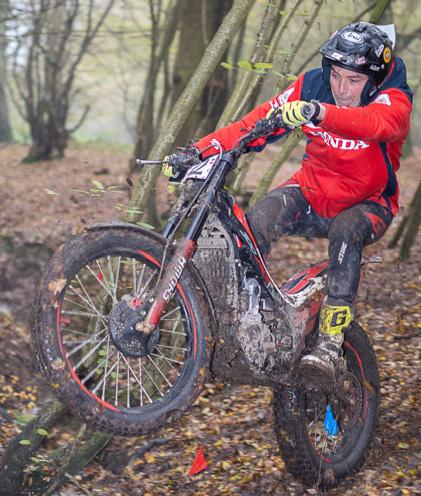
5 minute read
Straight Talking
...And The New Normal? Final Chequers
Coronavirus claimed the life of one of motorcycle engineering's great eccentrics with the recent loss of Angus "Ag" McPhail at the age of 79. Attracted by the opportunities offered by sprinting, then drag-racing, he used straight-line sport to pursue a never-ending stream of ideas and theories.
Advertisement
Starting with the radical "Ag's Barrow", a methanol-fuelled Ariel Arrow, he later went on to create the legendary "Jade Warrior". Much of this was inspired by racing car practice, as Ag saw a way of using some of the technological advances in four-wheel competition while motorcycling design remained far more reserved in its approach. The three-wheeled Jade Warrior was the result and its radical ideas soon ruffled feathers (If you can't beat them – protest them?) and so Ag then took the bold move of rebuilding Jade Warrior as a two-wheeler. He retained the lay-down, face forward riding position. Immediately behind the rider, the engine was a fourcylinder combination of homebuild and Cosworth components driving an enormous rear slick. The seven-second performance achieved without nitro-methane more than vindicated Ag's ideas. If you have Internet access, Googling "Jade Warrior" will provide a better picture of the efforts Ag put into his race engineering.
Ag was also a third of McCoy Dynamics, a partnership with Mick Hand and Keith Parnell making a trio of drag-race pioneers. At various times they all raised the bar in whatever class of racing they happened to be competing. While Ag eventually moved on to other interests, and more dependable ways of earning a living, he still continued to contribute ideas. His later input involved "Storm", a bike piloted by Lorcan Parnell (son of Keith) and put together by Barry Eastman and Mick Hand. The trademark radical ideas this time extended to methanol fuel and triple stage turbocharging. Racing in either ACU Funny Bike or FIM Top Fuel the bike has run down to the six-and-a-half second mark.
Sadly, there was a further loss of someone who made her mark earlier in straight line endeavour. Recent years of ill health finally caught up with Irene Heckle. Husband Des was an enthusiastic sprinter and, before they married, as Irene Scargill, she proved to be another very competent rider. Like Des, she concentrated on small capacity solos and then excelled on a three-wheeled Villiers Starmaker-powered cyclecar, eventually setting British and World records with some remarkable 15-second runs. The World record (in the 250cc category) she will hold in perpetuity as the methods of measurement have since changed. In more recent years, the couple were deeply committed supporters of the Francis-Barnett Owners' Club.

Current ACU Sprint champion Steve Walton looks down the wide open spaces of Shakespeare County Raceway, home to 44 years of straight-line racing.
Looking back at the legacies The common thread was that the builders, riders and the many who offered mechanical help almost inevitably came from a background in British engineering. Computer science of those riders is also a reminder of how much life has changed over the decades since they made their respective marks on straight-line sport. The annual World Records events held at Elvington airfield in the sixties and seventies could attract crowds of thousands to watch almost totally amateur efforts reach for the stars. By the time Ag's star was, arguably, at its brightest, things had changed and although sprinting still had a healthy following, drag racing had captured the audiences. may have been just around the corner, but for most involved in such skills at every level, it had all started with a handson training. How many have those sort of interests and opportunities nowadays?
A Silent City?
When it is not the location for the Speed Trials, or the destination for the numerous London-Brighton Runs that feature all sorts of vehicles (mechanically powered and otherwise) Madeira Drive, Brighton's seafront road, is used as a car park. With Brighton's eye-watering parking tariffs, it generates a fair amount of cash for the authorities. Since lockdown, the City Council has closed the road to all vehicular traffic, preferring it to be a sort of linear exercise area. Some three months on, this has evolved to become a contentious decision as greater freedom of movement becomes a more realistic prospect. There are a significant number who wish Madeira Drive to remain vehicle free, others for the road to go back as it was. At present, there are two e-petitions on the council's web-site with a ratio of about 3:1 in favour of keeping the road for vehicular use.
A further aspect worth noting is that closure will probably finish off some of the leisure businesses along Madeira Drive. Already struggling to survive the effects of lockdown, much of their turnover depends on customers driving to the premises.
The Council is obliged to discuss the petitions at the end of July. Green policies have long had strong support on the council, with the declared intention to make the city centre car-free as soon as 2023. There could well be hot debate before a final decision.

If you wish to help the cause Simon Havercroft exercises the throttle wire on his MZ at last year's Speed Trials when social distancing had yet to enter the nation's vocabulary. of motorcycle sport then please go to the e-petition section of the Brighton-Hove council web site and sign.
Not-So-Rosy In The Garden?
The government has come up with proposals for a number of garden village/town developments in attempts to deal with the housing shortage. Recently, it has been pointed out how nearly all of the developments fail miserably in another policy of reducing private vehicle use. The chosen areas tend to be greenfield sites, away from towns (for schools, jobs and medical facilities) and usually having poor road (for possible future bus routes) and rail connections. Life in such communities is all but impossible without private transport.
An example given of ticking all the wrong boxes was that of "Long Marston" in Warwickshire, where 3,500 homes are planned. It was pointed out that the site has poor local road connections, no local sources of employment and it is seven miles away from the nearest railway station. Of course, as a popular local facility for many forms of sport, music festivals, an outdoor market, an airfield for leisure flying and home to Shakespeare County Raceway it once served the community handsomely. Please, mister, can we have our drag strip back?
Just as this goes off to the publisher, the news comes that Santa Pod is open for drag racing! However, in common with other sports, NO spectators are permitted. Strange days.







